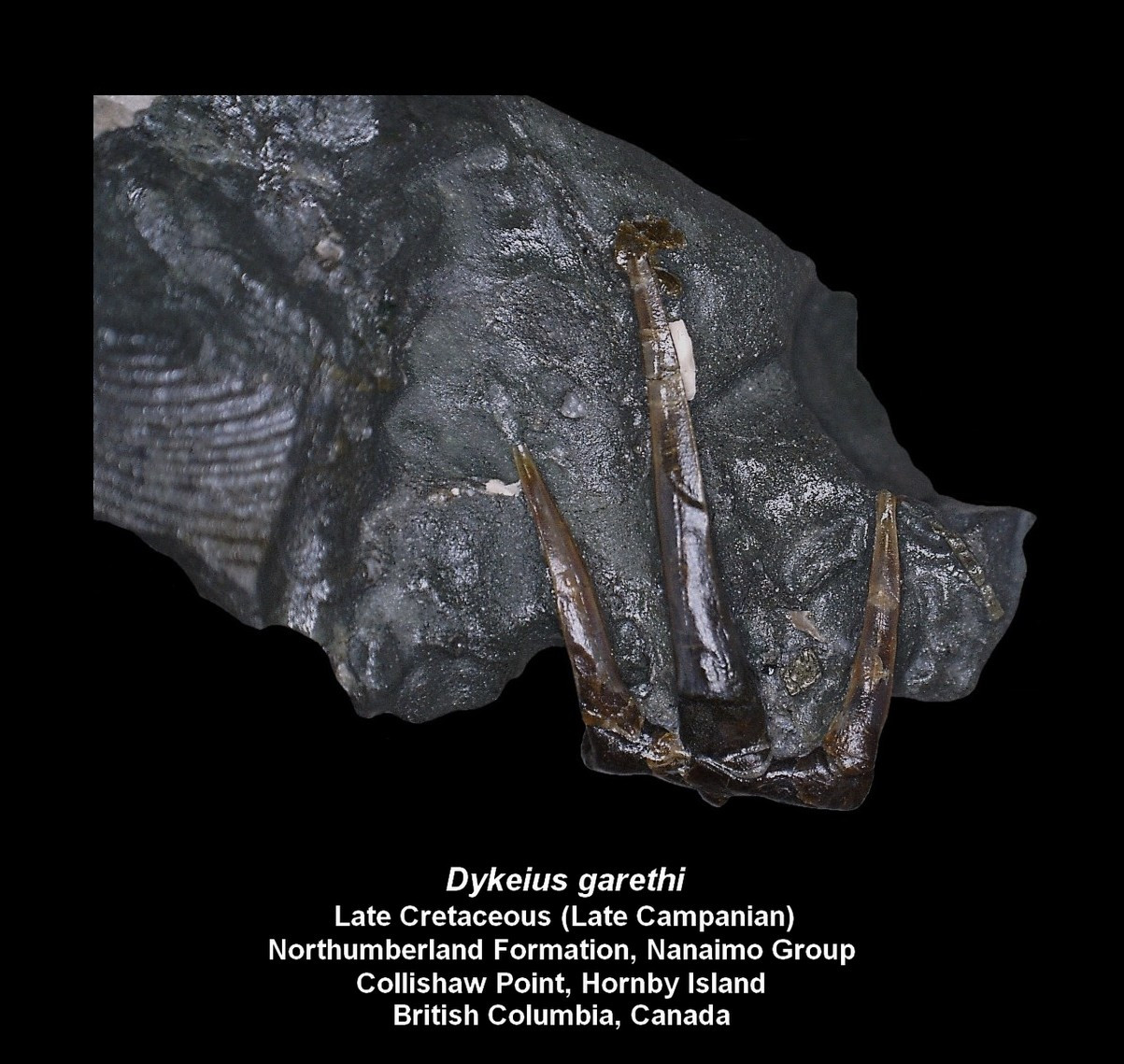Dykeius garethi
Cappetta, Morrison & Adnet, 2019
Classification: Elasmobranchii Hexanchiformes Chlamydoselachidae
Reference of the original description
A shark fauna from the Campanian of Hornby Island, British Columbia, Canada: an insight into the diversity of Cretaceous deep-water assemblages. Historical Biology, 33(8), 1121–1182
A shark fauna from the Campanian of Hornby Island, British Columbia, Canada: an insight into the diversity of Cretaceous deep-water assemblages. Historical Biology, 33(8), 1121–1182
Types
Dykeius garethi
Dykeius garethi
Description:
Citation: Dykeius garethi Cappetta, Morrison & Adnet, 2019: In: Database of fossil elasmobranch teeth www.shark-references.com, World Wide Web electronic publication, Version 04/2024
Please send your images of "Dykeius garethi" to info@shark-references.com

Dykeius garethi Cappetta, Morrison & Adnet, 2019, Late Cretaceous, Late Campanian, Northumberland Formation, Nanalmo Group, Collishaw Point, Hornby Island, Canada. Collection and © Adam Anderson

Dykeius garethi Cappetta, Morrison & Adnet, 2019, Late Cretaceous, Late Campanian, Northumberland Formation, Nanalmo Group, Collishaw Point, Hornby Island, Canada. Collection and © Adam Anderson
Description
Original diagnosis after Cappetta, Morrison & Adnet, 2019 [27810]: This monospecific chlamydoselachid genus is characterised by the following combination of dental characters: a particularly large size compared to other representatives of the family, extinct as well as extant. Indeed, the largest tooth is 28.5 mm in total height. The cusps are high, erect and slender, clearly sigmoid, almost perpendicular to the root basal face, and with enameloid completely devoid of folds. Absence of intermediate or marginal cusplets. Occurrence of a pair of very strong, high and labio-lingually oriented lingual crests on the lingual face of the root. The root is much more developed transversely than labio-lingually.
Original diagnosis after Cappetta, Morrison & Adnet, 2019 [27810]: This monospecific chlamydoselachid genus is characterised by the following combination of dental characters: a particularly large size compared to other representatives of the family, extinct as well as extant. Indeed, the largest tooth is 28.5 mm in total height. The cusps are high, erect and slender, clearly sigmoid, almost perpendicular to the root basal face, and with enameloid completely devoid of folds. Absence of intermediate or marginal cusplets. Occurrence of a pair of very strong, high and labio-lingually oriented lingual crests on the lingual face of the root. The root is much more developed transversely than labio-lingually.
References

Global impact and selectivity of the Cretaceous-Paleogene mass extinction among sharks, skates, and rays. Science, 379, 802–806
DOI: 10.1126/science.abn2080

A shark fauna from the Campanian of Hornby Island, British Columbia, Canada: an insight into the diversity of Cretaceous deep-water assemblages. Historical Biology, 33(8), 1121–1182
DOI: 10.1080/08912963.2019.1681421

Global impact and selectivity of the Cretaceous-Paleogene mass extinction among sharks, skates, and rays. Science, 379, 802–806
DOI: 10.1126/science.abn2080

A shark fauna from the Campanian of Hornby Island, British Columbia, Canada: an insight into the diversity of Cretaceous deep-water assemblages. Historical Biology, 33(8), 1121–1182
DOI: 10.1080/08912963.2019.1681421















